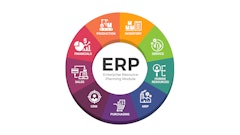AMR Research offers self-assessment tool to help retail companies improve processes, reclaim lost sales
Boston — December 14, 2004 — Technology consultancy AMR Research has created a new tool to help retailers understand where planning and supply chain problems are causing them to lose sales, and to develop the means to realize those lost profits.
In the hyper-competitive retail industry, merchandising and promotional plans that are not consistently and properly executed in every store result in billions of dollars in lost sales. Out-of-stocks and unknowledgeable store associates are only a few of the complaints that cause customers to shop elsewhere.
According to AMR, such issues cause an average customer to not return after three negative experiences, and Wal-Mart claims that each lost customer represents over $200,000 in lifetime lost sales. Yet even though retailers have hints of why problems exist, 80 percent have not measured their store operations.
AMR said it has created a self-assessment tool called the Six Sigma Retailing Quotient, which is a set of metrics intended to help retailers quantify the effectiveness of their store operations and realize lost profits.
The consultancy said it designed the quotient in response to consumer feedback indicating that the current shopping experience needs improvement. The tool enables retailers to prioritize investments that positively impact the customer experience, AMR said.
According to AMR, retailers that have invested in specific technologies to improve their Six Sigma Retailing performance have realized the following benefits: 8-15 percent reduction in out-of-stocks; 8 percent labor efficiency improvement; and 15-30 percent promo set-up compliance increase.
AMR said the Six Sigma Retailing Quotient outlines and measures performance on three interrelated store operations components that are critical to store operations success: Customer Intimacy (providing a seamless, consistent shopping experience throughout the entire shopping experience); Product Availability (ensuring in-stock conditions without excess inventory); and employee efficiency (empowering every store associate to deliver top-quality service and improve productivity).
"This one of a kind quotient provides a systematic and quantitative way to measure store operations performance," asserted Rob Garf, retail analyst for AMR Research. "By leveraging its results, retailers are getting a handle on the true state of store operations, making good investments, and taking steps towards achieving the full benefits of Six Sigma Retailing."
Boston — December 14, 2004 — Technology consultancy AMR Research has created a new tool to help retailers understand where planning and supply chain problems are causing them to lose sales, and to develop the means to realize those lost profits.
In the hyper-competitive retail industry, merchandising and promotional plans that are not consistently and properly executed in every store result in billions of dollars in lost sales. Out-of-stocks and unknowledgeable store associates are only a few of the complaints that cause customers to shop elsewhere.
According to AMR, such issues cause an average customer to not return after three negative experiences, and Wal-Mart claims that each lost customer represents over $200,000 in lifetime lost sales. Yet even though retailers have hints of why problems exist, 80 percent have not measured their store operations.
AMR said it has created a self-assessment tool called the Six Sigma Retailing Quotient, which is a set of metrics intended to help retailers quantify the effectiveness of their store operations and realize lost profits.
The consultancy said it designed the quotient in response to consumer feedback indicating that the current shopping experience needs improvement. The tool enables retailers to prioritize investments that positively impact the customer experience, AMR said.
According to AMR, retailers that have invested in specific technologies to improve their Six Sigma Retailing performance have realized the following benefits: 8-15 percent reduction in out-of-stocks; 8 percent labor efficiency improvement; and 15-30 percent promo set-up compliance increase.
AMR said the Six Sigma Retailing Quotient outlines and measures performance on three interrelated store operations components that are critical to store operations success: Customer Intimacy (providing a seamless, consistent shopping experience throughout the entire shopping experience); Product Availability (ensuring in-stock conditions without excess inventory); and employee efficiency (empowering every store associate to deliver top-quality service and improve productivity).
"This one of a kind quotient provides a systematic and quantitative way to measure store operations performance," asserted Rob Garf, retail analyst for AMR Research. "By leveraging its results, retailers are getting a handle on the true state of store operations, making good investments, and taking steps towards achieving the full benefits of Six Sigma Retailing."

















